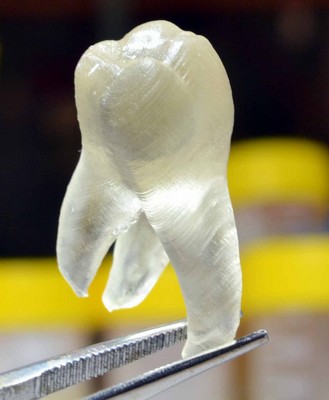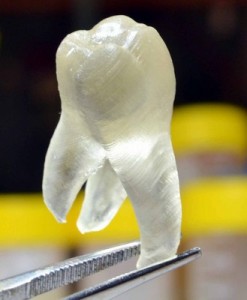Printed Teeth Kill Germs

Latest News
November 18, 2015
Dental applications have been a hotbed of 3D printing activity for a while now. Orthodontic companies use the technology to create highly accurate dental molds and customized appliances and braces, for example. Some researchers in the Netherlands have come up with a dental solution for printing false teeth that not only improves your smile, but also kills bacteria.
Professor Andreas Herrmann at the University of Groningen in the Netherlands developed an antimicrobial plastic that can be used to print teeth while also avoiding the types of bacterial damage that frequently leads to implant replacement.
The director of the Kolff Institute for Biomedical Engineering and Materials Science had originally approached Herrmann about developing an antimicrobial dental glue. “So when I saw all sorts of 3D printed objects for use in dentistry in her office, I said: why not incorporate the antimicrobials in 3D prints?” Herrmann recalled.
The dental resin polymers also include antimicrobial quaternary ammonium salts that are positively charged. The salts cause bacterial membranes to burst and die.
To reduce diffusion of the antimicrobial material, the team polymerized the antimicrobial groups to form long chains, then added the polymer to the 3D printing fluid.
Using 3D scanning and printing, dentists could print replacement teeth that perfectly fit a patient’s mouth, and that would likely last longer because of their antimicrobial properties. The process also eliminates the need for messy dental molds.
The team used the polymer to print false teeth, orthodontic braces, and other items. They coated the products with saliva and Streptococcus mutans (the same bacteria that causes tooth decay), and found the new material killed more than 99% of the bacteria.
The first application for the technology will likely be in orthodontics, but 3D printed crowns are another possibility.
The research appeared in the journal Advanced Functional Materials.
Source: New Scientist
Subscribe to our FREE magazine, FREE email newsletters or both!
Latest News
About the Author
Brian Albright is the editorial director of Digital Engineering. Contact him at [email protected].
Follow DE





